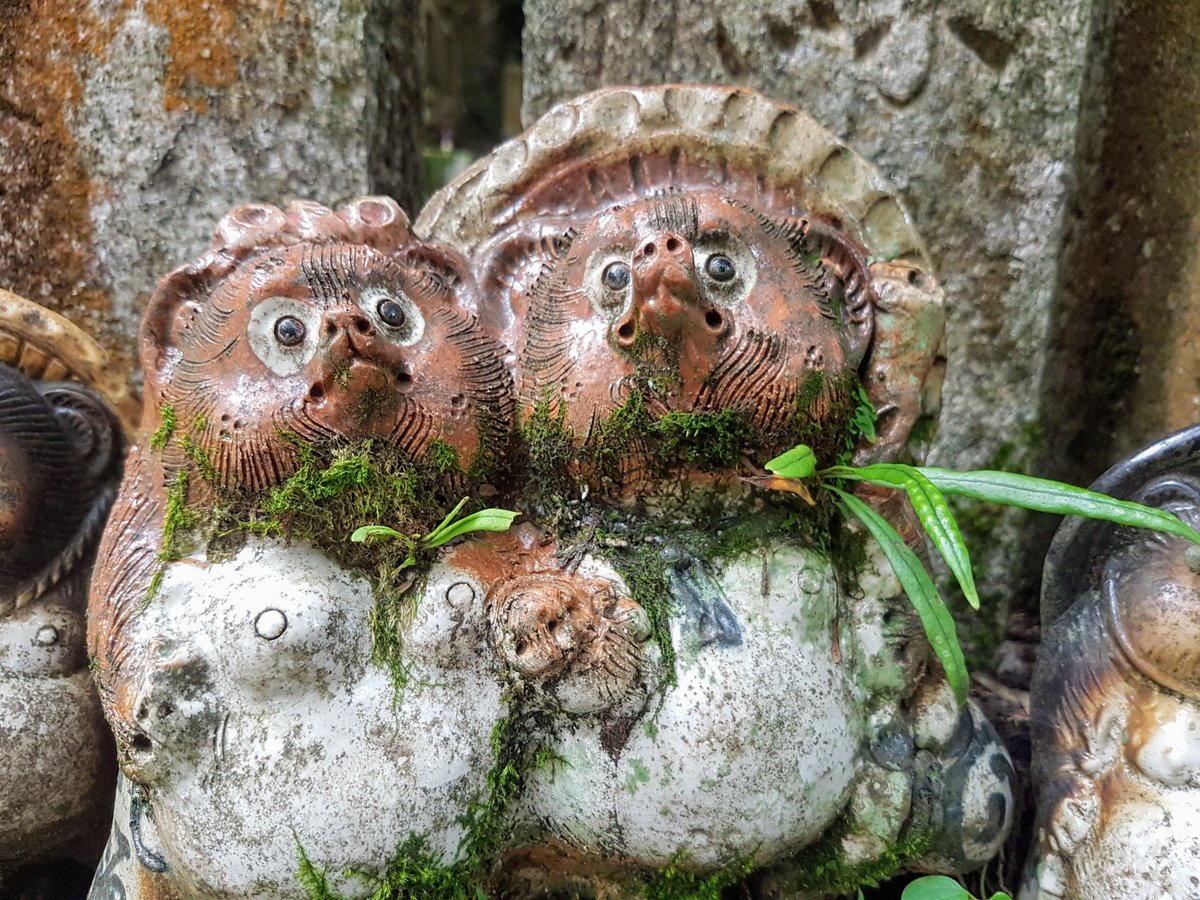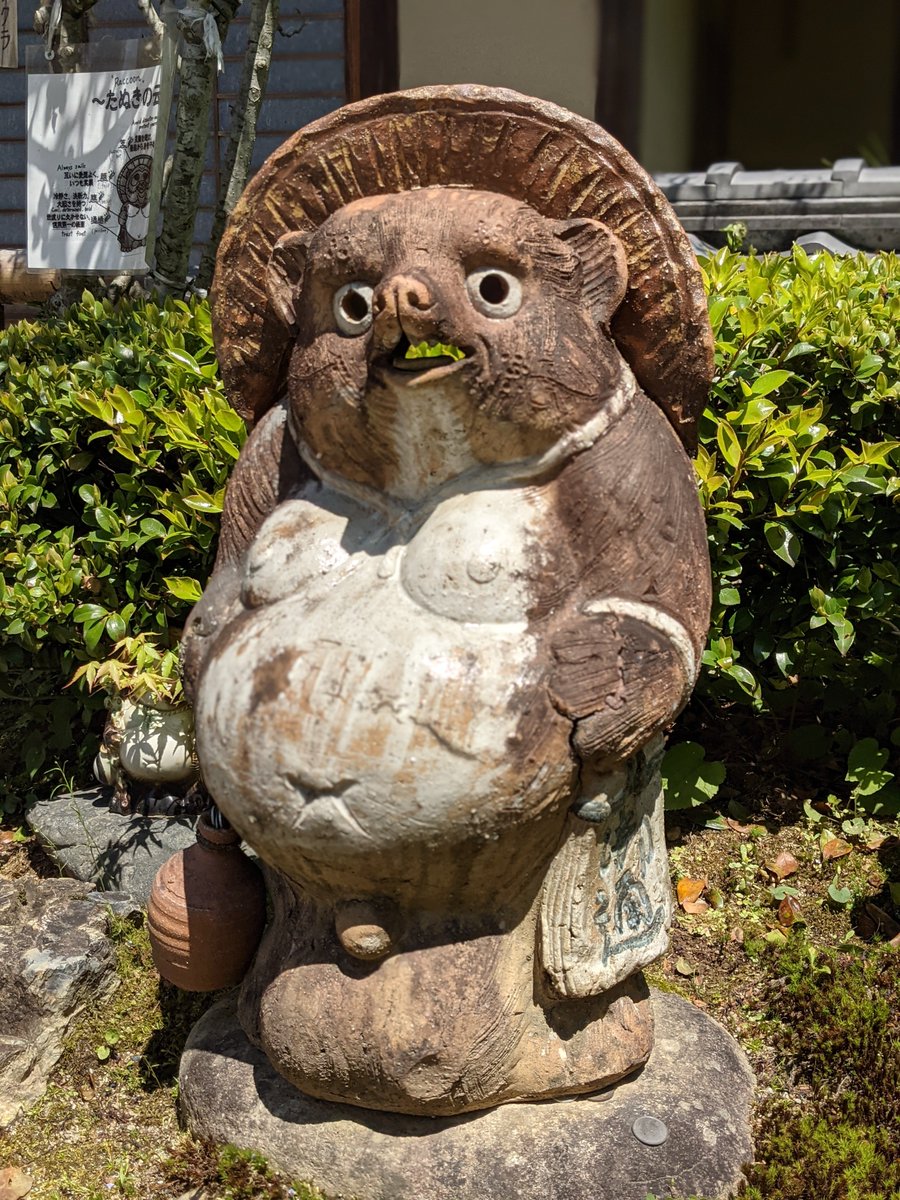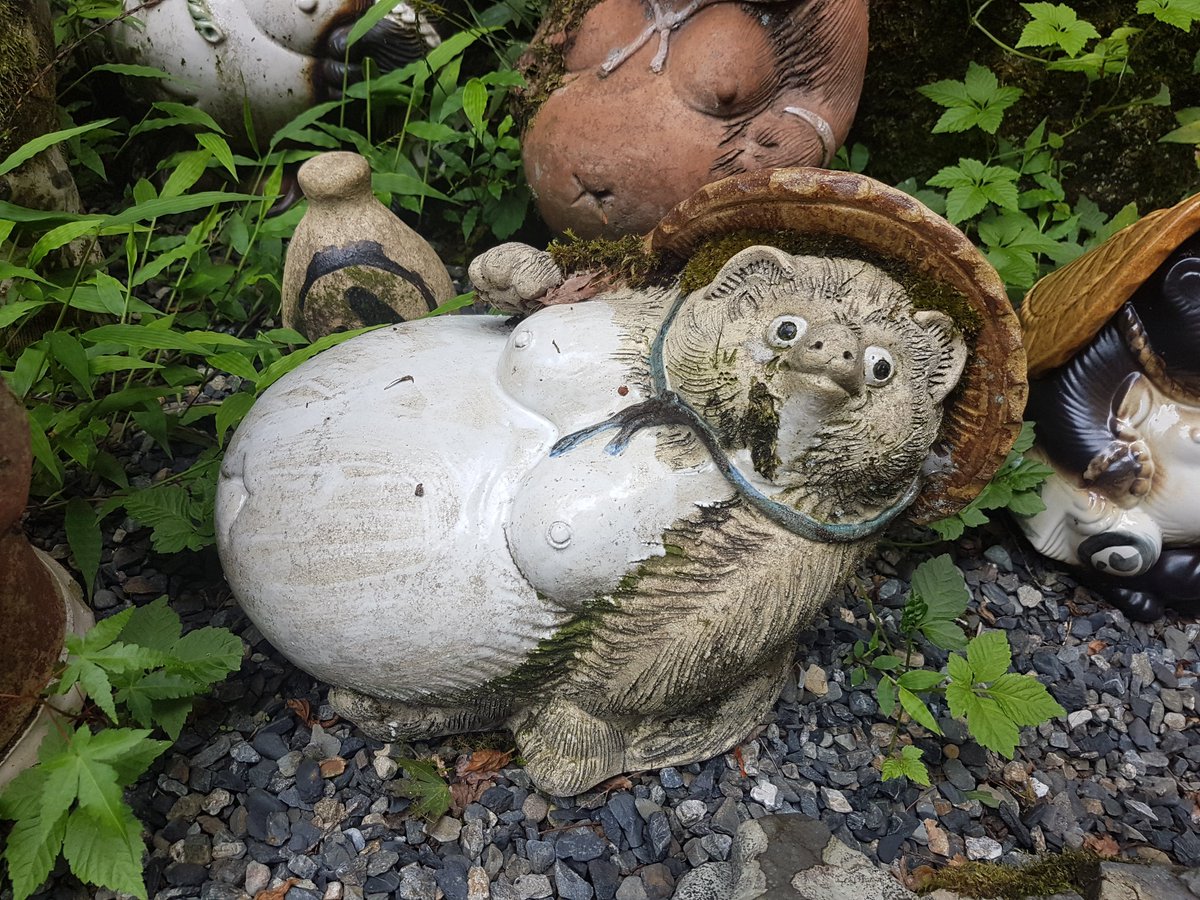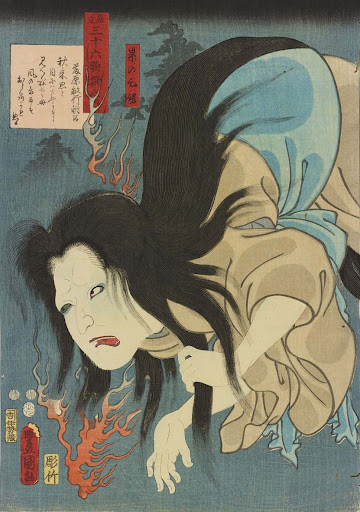
💸HAPPY SHICHIFUKUJIN DAY✨
Today is 'Shichifukujin-no-hi' (七福神の日), a day dedicated to the '7 Gods of Fortune'. Mostly this is to do with wordplay.
One reading of July 27th could be...7 = 'shichi' シチ / 2 = 'fu' フ / 9 'ku' = ク. Together = 'shichifuku' (七福).
#七福神の日



Today is 'Shichifukujin-no-hi' (七福神の日), a day dedicated to the '7 Gods of Fortune'. Mostly this is to do with wordplay.
One reading of July 27th could be...7 = 'shichi' シチ / 2 = 'fu' フ / 9 'ku' = ク. Together = 'shichifuku' (七福).
#七福神の日



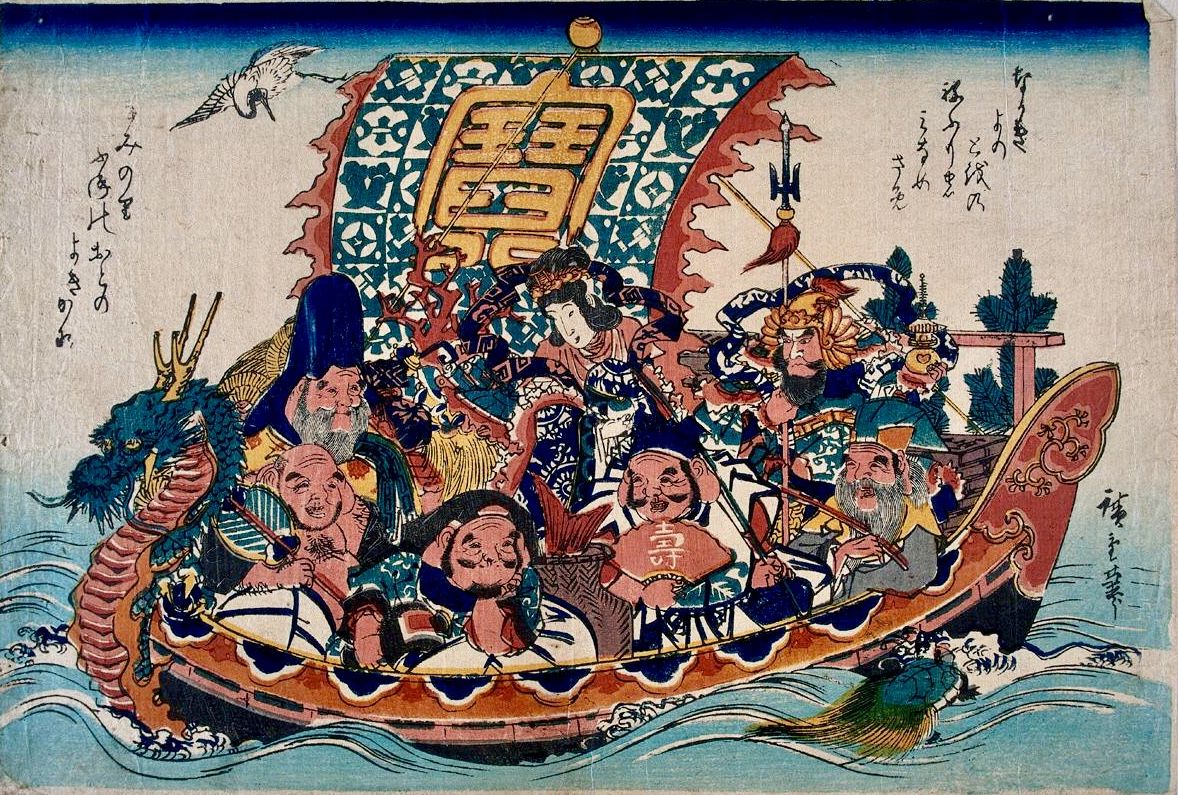
In the Muromachi period the first pilgrimage to the Seven Gods of Fortune began in Kyōto. From here similar pilgrimages popped up all across Japan.
The Kyōto Shichifukujin Mairi (都七福神まいり) is typically undertaken at the New Year, or on the 7th day of the month.
#Japan #京都



The Kyōto Shichifukujin Mairi (都七福神まいり) is typically undertaken at the New Year, or on the 7th day of the month.
#Japan #京都


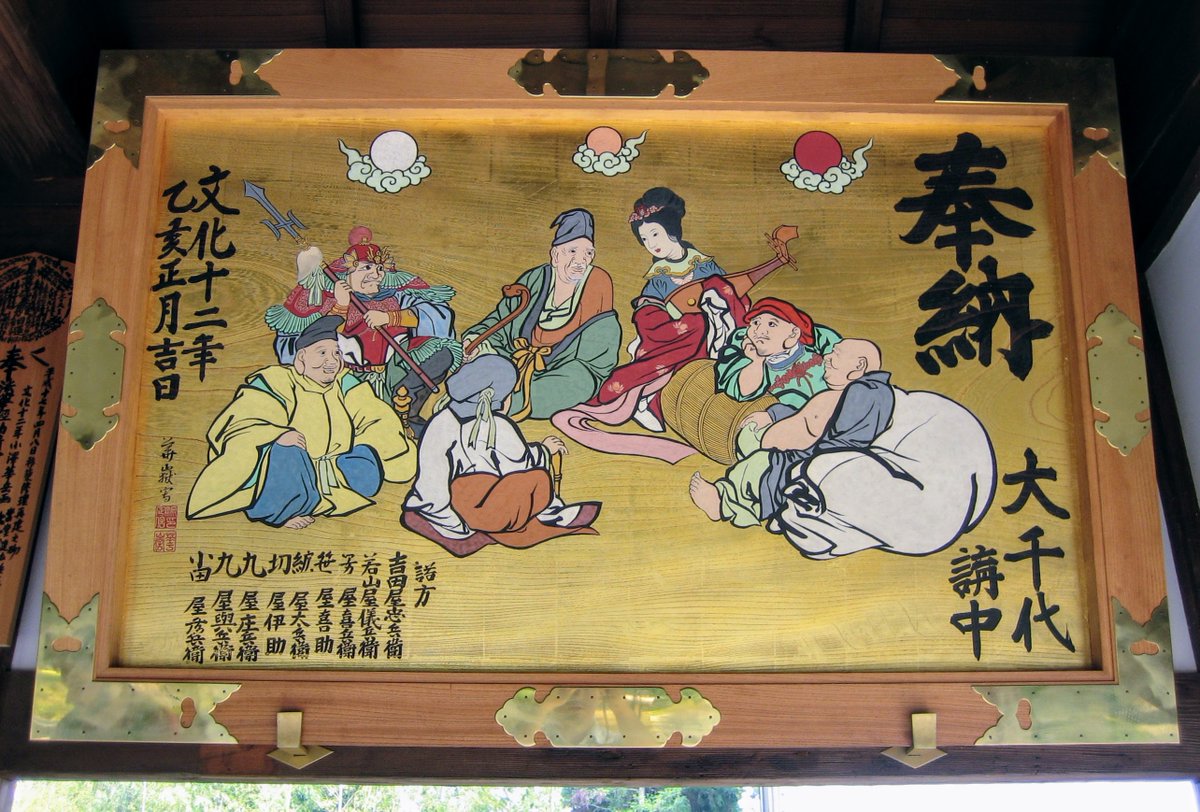

1) 🎣EBISU-JINJA (えびす神社)🐟
Ebisu (恵比寿) is the god of business prosperity, successful crops and abundance. He is patron of fishermen (he's typically depicted in a fisherman costume, with fishing rod & large fish) and workmen, & is possibly the most popular of the 7 gods.



Ebisu (恵比寿) is the god of business prosperity, successful crops and abundance. He is patron of fishermen (he's typically depicted in a fisherman costume, with fishing rod & large fish) and workmen, & is possibly the most popular of the 7 gods.




The pilgrimage likely began at Ebisu-jinja, one of the route's oldest sites.
The shrine was founded by Myōan Eisai (明菴栄西) in 1202 to thank the god for protecting him during a stormy journey home from China.
Ebisu-jinja became guardian of Kennin-ji (founded at the same time).



The shrine was founded by Myōan Eisai (明菴栄西) in 1202 to thank the god for protecting him during a stormy journey home from China.
Ebisu-jinja became guardian of Kennin-ji (founded at the same time).




2) 🌾DAIKOKUTEN & MYŌEN-JI (妙圓寺)🪙
Ebisu & Daikokuten (大黒天), thanks to their connection to business success & wealth, are the most popular of the Shichifukujin.
It is thought Myōen-ji was created in 1615 by Nichiei (日英) and the local parishioners of Matsugasaki (松ヶ崎).



Ebisu & Daikokuten (大黒天), thanks to their connection to business success & wealth, are the most popular of the Shichifukujin.
It is thought Myōen-ji was created in 1615 by Nichiei (日英) and the local parishioners of Matsugasaki (松ヶ崎).

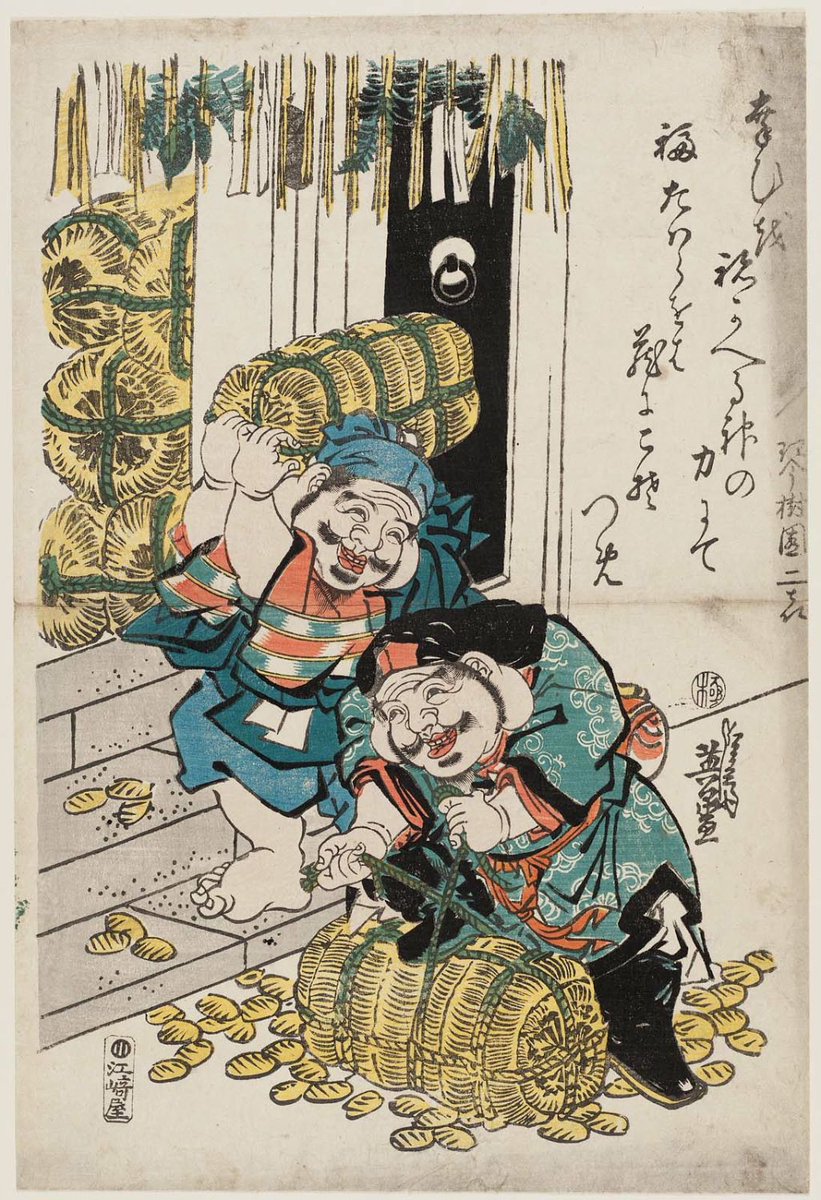


Daikokuten (大黒天) has a an extensive CV.
He's patron of cooks, farmers and bankers, god of commerce & prosperity, guardian of crops, and demon hunter extraordinaire.
Perpetually smiling, he is often shown holding a golden mallet & sitting on rice bales (representing abundance).



He's patron of cooks, farmers and bankers, god of commerce & prosperity, guardian of crops, and demon hunter extraordinaire.
Perpetually smiling, he is often shown holding a golden mallet & sitting on rice bales (representing abundance).




3) 🌊BENZAITEN & ROKUHARAMITSU-JI (六波羅蜜寺)🪕
Benzaiten (弁才天) is the goddess of 'everything that flows': water, time, words, speech, eloquence, music & knowledge.
Evolving from the Hindu deity Saraswati (सरस्वती), she is worshipped as both a Buddhist goddess & Shinto deity.



Benzaiten (弁才天) is the goddess of 'everything that flows': water, time, words, speech, eloquence, music & knowledge.
Evolving from the Hindu deity Saraswati (सरस्वती), she is worshipped as both a Buddhist goddess & Shinto deity.




Rokuharamitsu-ji's Benten-dō (六波羅蜜寺/弁天堂) began as Emperor Sutoku's (崇徳天皇 1119-64) 'Goma-dō' (護摩堂).
After the emperor dreamt that Benzaiten (輝く弁天様) came to him, promising to cleanse the world, the monk Zenkai (禅海上人) crafted an image of the goddess.
#Kyoto



After the emperor dreamt that Benzaiten (輝く弁天様) came to him, promising to cleanse the world, the monk Zenkai (禅海上人) crafted an image of the goddess.
#Kyoto


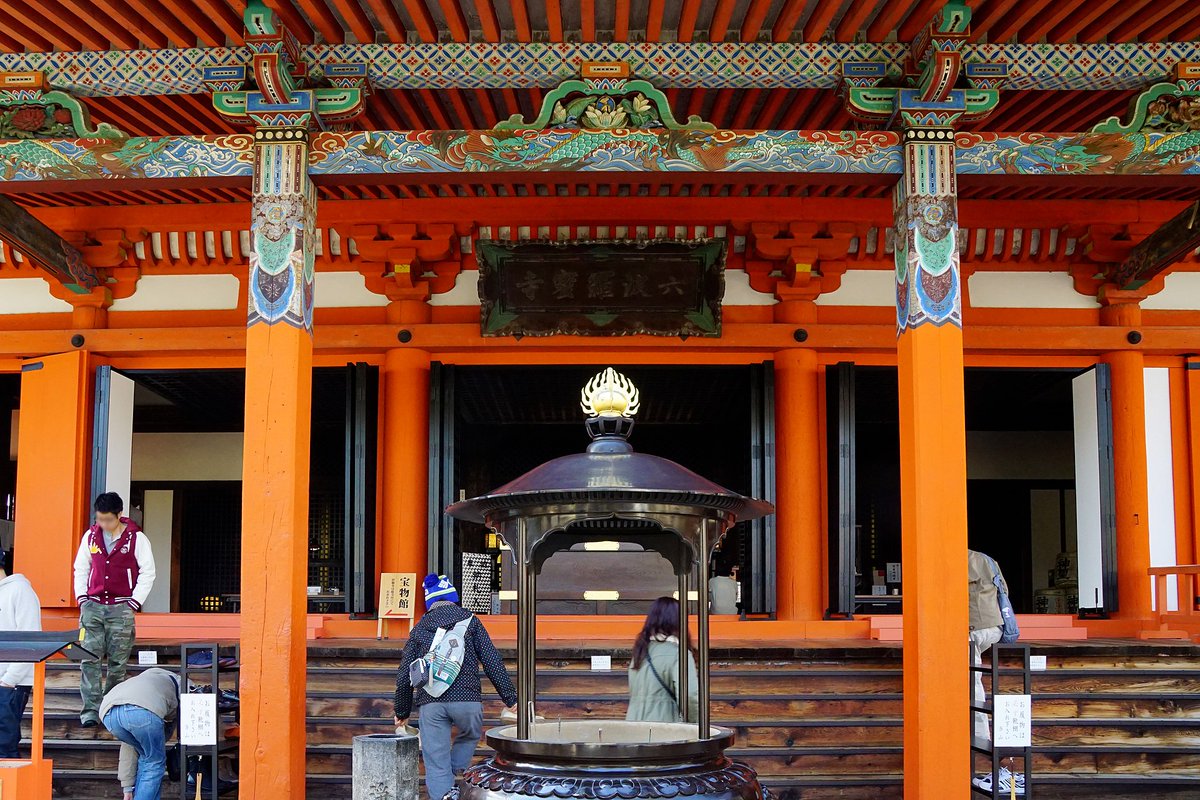

In 1156, following the Hōgen Rebellion (保元の乱), ex-emperor Sutoku was exiled to Sanuki (he would later become a Tengu, 1 of Japan's 3 most feared yōkai 日本三大悪妖怪).
In the anti-Buddhist climate of 1868 the statue was moved to Rokuharamitsu-ji to save it.
#Japan #yokai



In the anti-Buddhist climate of 1868 the statue was moved to Rokuharamitsu-ji to save it.
#Japan #yokai




4) 🤣HOTEI & MANPUKU-JI (萬福寺)🎅
Hotei was a Chinese monk that lived in the coastal district of Wuyue. After his death, around 917, he became a Buddhist saint & was eventually made 1 of the '7 Gods of Fortune'.
Rather eccentric and jolly, he is known as the "Laughing Buddha".



Hotei was a Chinese monk that lived in the coastal district of Wuyue. After his death, around 917, he became a Buddhist saint & was eventually made 1 of the '7 Gods of Fortune'.
Rather eccentric and jolly, he is known as the "Laughing Buddha".




Kyōto's most famous image of Hotei can be found at Manpuku-ji (萬福寺) in Uji.
110.3cm tall & covered in gold leaf, the statue was created in 1663 by Han Dōsei (范道生).
He sucks worldly desires from the mouths of the faithful & replaces them with virtues he keeps in his sack👀



110.3cm tall & covered in gold leaf, the statue was created in 1663 by Han Dōsei (范道生).
He sucks worldly desires from the mouths of the faithful & replaces them with virtues he keeps in his sack👀




5) 👹BISHAMONTEN & TŌ-JI (東寺)⚔️
Bishamonten (毘沙門天) is chief of the 'Four Heavenly Kings' (四天王 'Shitennō'). Depicted wearing heavy armour, and often carrying a pagoda (or umbrella), he is protector of the north and is associated with the colours yellow and green.
#Japan



Bishamonten (毘沙門天) is chief of the 'Four Heavenly Kings' (四天王 'Shitennō'). Depicted wearing heavy armour, and often carrying a pagoda (or umbrella), he is protector of the north and is associated with the colours yellow and green.
#Japan



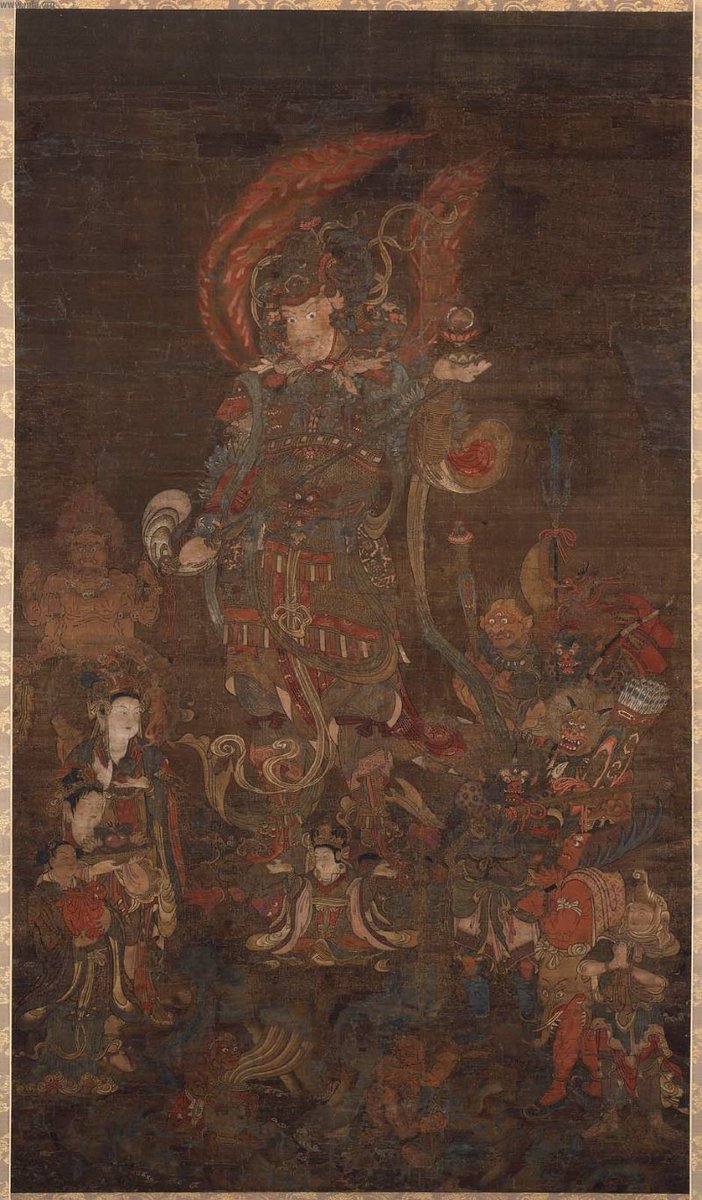
God of fortune in war and conflict, Bishamonten is associated with authority, and is seen as a protector of those who follow rules & 'behave'.
Adopted into Buddhism, he is a fierce defender of holy sites and wields a spear to strike down evil spirits (and terrify the unfaithful).



Adopted into Buddhism, he is a fierce defender of holy sites and wields a spear to strike down evil spirits (and terrify the unfaithful).




6) ♟️FUKUROKUJU & SEKIZANZEN-IN (赤山禅院)👴
Fukurokuju (福禄寿) is thought to have been a real person, a hermit during the Chinese Song dynasty (960-1279). Considered a reincarnation fo the Taoist god Xuanwu (玄武), he is the god of wisdom, luck, longevity, wealth & happiness.



Fukurokuju (福禄寿) is thought to have been a real person, a hermit during the Chinese Song dynasty (960-1279). Considered a reincarnation fo the Taoist god Xuanwu (玄武), he is the god of wisdom, luck, longevity, wealth & happiness.
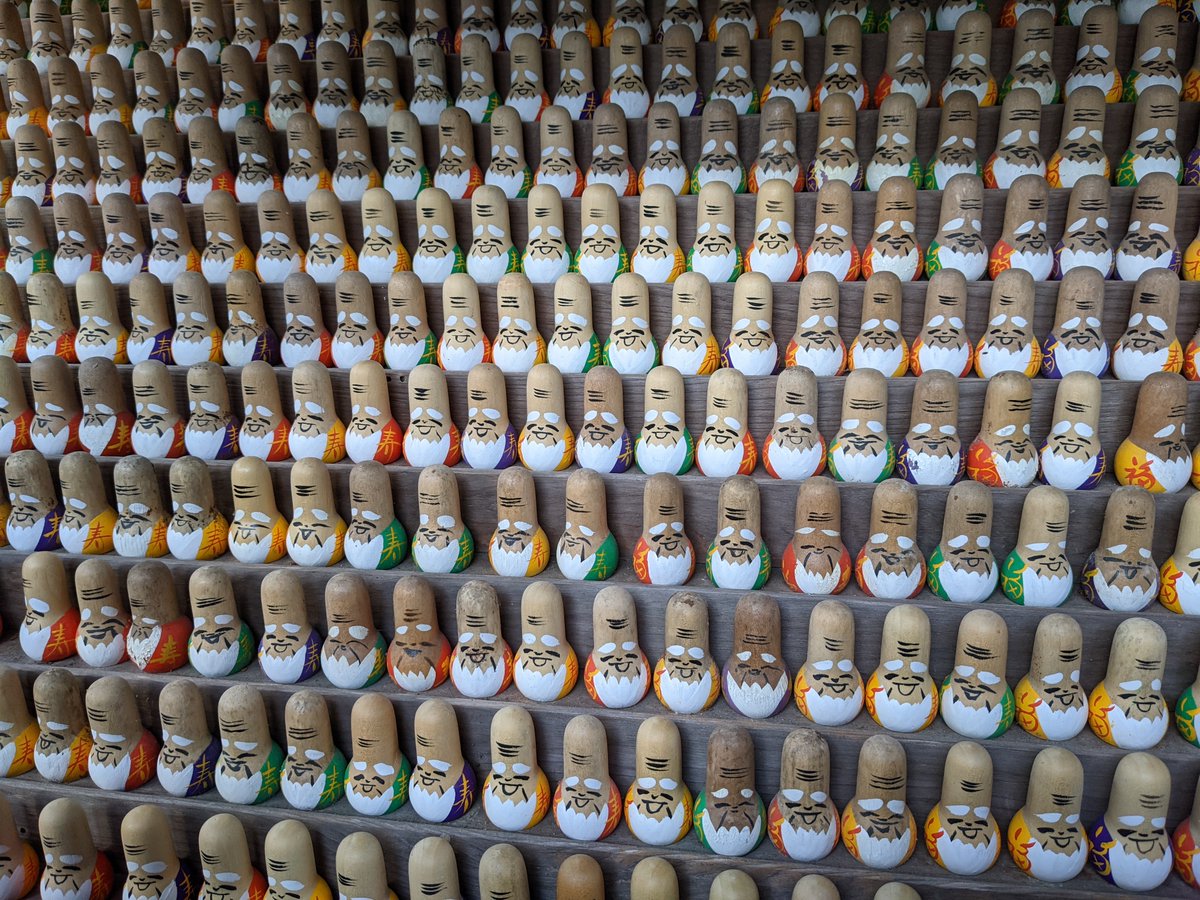



Fukurokuju has the ability to resurrect the dead.
He is a distinctive fellow, with a long, elongated head almost the same size as his body.
Wearing traditional Chinese clothes, he is often shown carrying a walking stick & scroll, accompanied by an animal (symbolizing long life).



He is a distinctive fellow, with a long, elongated head almost the same size as his body.
Wearing traditional Chinese clothes, he is often shown carrying a walking stick & scroll, accompanied by an animal (symbolizing long life).




🚨SIDE NOTE🚨
Fukurokuju is sometimes confused with Jurōjin (寿老人), another of the '7 Gods of Fortune'.
He actually came to replace the goddess Kichijōten (吉祥天), who was often originally counted as 1 of the 7 (more on this later).
Some claim Jurōjin is Fukurokuju's grandson!


Fukurokuju is sometimes confused with Jurōjin (寿老人), another of the '7 Gods of Fortune'.
He actually came to replace the goddess Kichijōten (吉祥天), who was often originally counted as 1 of the 7 (more on this later).
Some claim Jurōjin is Fukurokuju's grandson!



7) ⭐️JURŌJIN & GYŌGAN-JI (行願寺)💀
The gods Jurōjin (寿老人) and Fukurokuju are often confused. Some say that both gods can inhabit the same body, and perhaps both originated as Taoist sages in Song China.
Jurōjin is rarely worshiped independently of the other Shichifukujin.



The gods Jurōjin (寿老人) and Fukurokuju are often confused. Some say that both gods can inhabit the same body, and perhaps both originated as Taoist sages in Song China.
Jurōjin is rarely worshiped independently of the other Shichifukujin.




Jurōjin (barely 90cm tall!) is a manifestation of the Taoist god 'The Old Man of the South Pole' (南極老人) & is a symbol of long life (and happiness).
Legend has it that a Song emperor invited him to the palace after becoming convinced that the old man was the god of longevity.
Legend has it that a Song emperor invited him to the palace after becoming convinced that the old man was the god of longevity.
8) 😇AN ABSENT GODDESS🤔
Often missing from the Shichifukujin (七福神) is a second goddess called Kichijōten or Kisshōten (吉祥天 'Auspicious Heavens').
Early on she was regularly included amongst the seven gods, but over time has been overshadowed by Fukurokuju (福禄寿).
#Japan



Often missing from the Shichifukujin (七福神) is a second goddess called Kichijōten or Kisshōten (吉祥天 'Auspicious Heavens').
Early on she was regularly included amongst the seven gods, but over time has been overshadowed by Fukurokuju (福禄寿).
#Japan




Kisshōten originated as the Hindu goddess Lakshmi (लक्ष्मी), goddess of wealth, fortune, love, beauty, joy & prosperity. As the "goddess who leads to one's goal" she was one of Hinduism's principal deities and formed a trinity with Parvati & Saraswati (Benzaiten in Japan-弁才天). 







😱THE NUMBER 7😊
It is generally believed that by worshipping the Shichifukujin you will receive 7 blessings, and will be protected from 7 misfortunes.
7 is an auspicious and symbolic number in Japan: the 7th day after birth or death is considered important in Buddhism.
#Japan
It is generally believed that by worshipping the Shichifukujin you will receive 7 blessings, and will be protected from 7 misfortunes.
7 is an auspicious and symbolic number in Japan: the 7th day after birth or death is considered important in Buddhism.
#Japan

• • •
Missing some Tweet in this thread? You can try to
force a refresh














